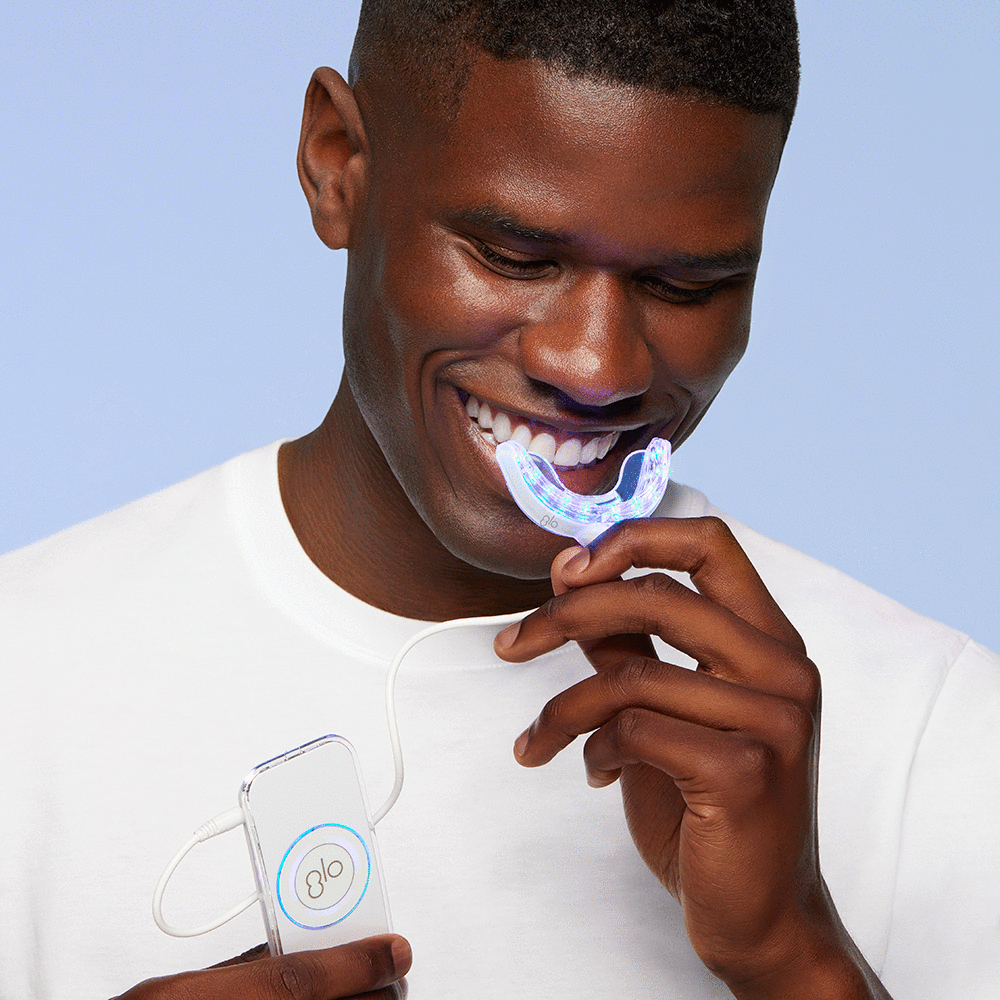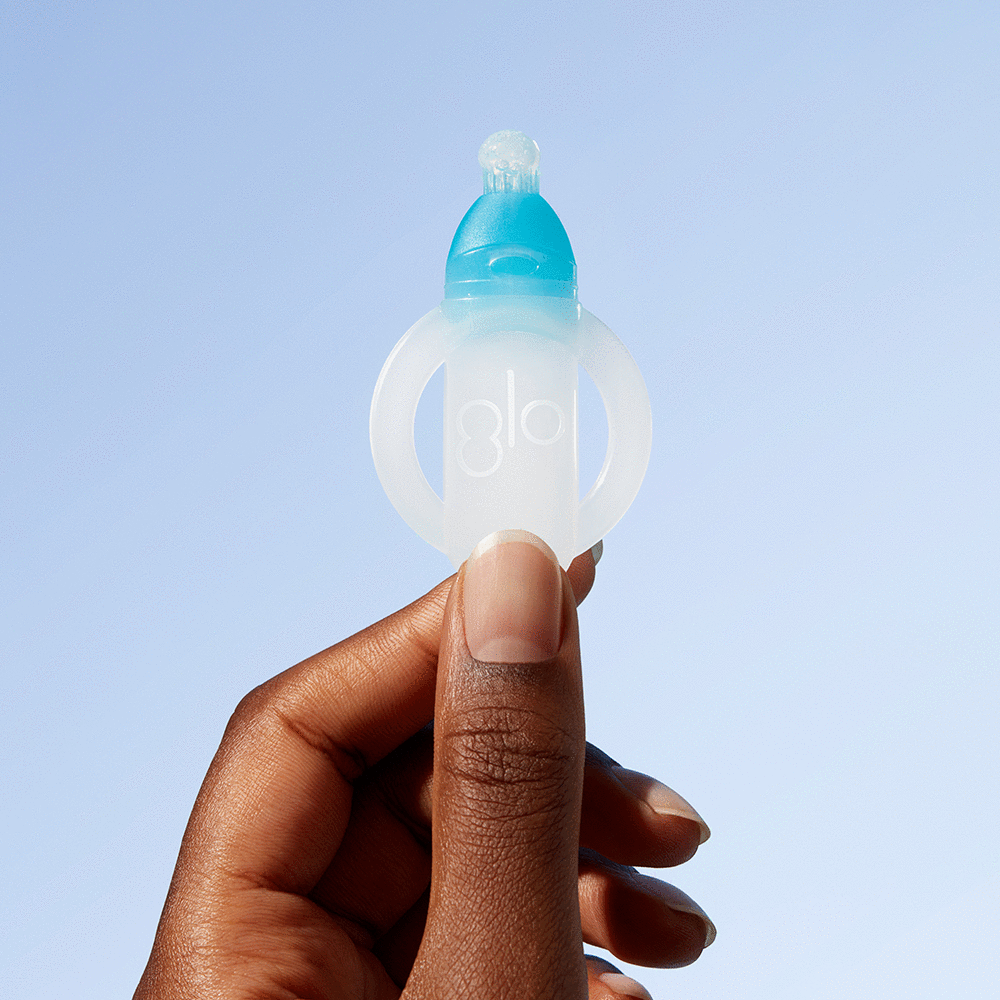
Your smile speaks a thousand words. It’s a direct indicator of your overall health and your greeting to the world. That’s why it’s so important to take care of your oral health. To maintain a healthy mouth, it’s important to stick to a dental hygiene routine. Even after a thorough brushing, flossing, and rinsing, you may notice stains or yellowing on your enamel and desire a boost in whitening power.
Teeth whitening technology has come a long way in recent years - long gone are the days when your only options were sticky whitening strips or messy gel trays. Instead, whitening is faster and easier than ever before with innovations like LED teeth whitening that enhance the effects of whitening gel for better, longer-lasting results.
An Overview of Teeth Whitening
Stains and yellowing can be caused by a variety of factors, from diet to genetics and lifestyle choices. Luckily, there are many simple and effective ways to whiten your teeth. Brightening your teeth can help boost your confidence and improve your overall appearance - but first, you’ll need to decide which whitening method is correct for you.
Teeth whitening works in two ways - physically and chemically whitening teeth. Physical whitening agents contain mechanical abrasives that buff away surface stains from tooth enamel. Much like a toothbrush polishes the surface of teeth, this method helps remove the top layer of staining, but may not remove deeply set-in stains or dramatically brighten your enamel shade. Chemical whitening agents, like hydrogen peroxide, bleach the teeth and actually whiten the enamel.
A chemical bleaching agent like hydrogen peroxide whitening gel sinks into porous tooth enamel and whitens teeth. Over-the-counter hydrogen peroxide products contain low concentrations of the bleaching agent, and professional-strength gel is more potent with higher concentrations of hydrogen peroxide.
Hydrogen peroxide is safe to use on teeth and whitens teeth effectively and quickly. This is because of the chemical reaction that takes place within the enamel. As hydrogen peroxide reacts with teeth, it oxidizes, breaking down the enamel’s discolored molecules and dissolving stains. Because the oxidization reaction is vital to whitening, contact time (the time the gel is on the enamel) and concentration (how strong the whitening gel is) significantly impacts your results.
LED Teeth Whitening
Light-activated teeth whitening procedures utilize light to enhance the effects of whitening gel and can use various forms of light, including ultraviolet (UV) light, halogen lights, and light-emitting diode (LED) lights.
Types of Light
UV light for whitening was the first to gain popularity but had significant drawbacks. UV light has been linked to genetic mutation and even cancer. While exposure to UV light during teeth whitening is limited, you may want to consider using a different form of light that doesn’t have the same risks.
Halogen lights use halogen gas to create light and is effective in limited studies. However, while halogen lights may aid in whitening teeth, this method isn’t widely practiced - you may only be able to get halogen light whitening from a dentist.
LED light emits a single color of light on the visible light spectrum - when used for whitening, it is a blue LED light. LED light requires minimal power and is stronger than other types of light, which helps them accelerate the oxidation of teeth whitening gel more quickly. They are also less prone to overheating than other kinds of light, which helps to preserve tooth enamel.
Chemical Processes
Light helps to accelerate whitening as they help speed up the oxidation reaction of bleaching agents like hydrogen peroxide, which removes stains faster and more effectively. Whitening agents, like hydrogen peroxide, remain active for 24 hours, so having a catalyst that accelerates the oxidation during this period is critical for deeper, more intense whitening.
LED vs Laser Whitening
Laser teeth whitening is a popular method of whitening that combines a hydrogen peroxide whitening gel applied to teeth with a laser that emits a narrow beam of light onto each tooth to whiten teeth. While somewhat similar to LED whitening, it cannot whiten all of your teeth at once and doesn’t take as long to whiten.
LED + Heat for Improved Efficacy
The most advanced method of tooth whitening is a combination of LED light and gentle heat. As mentioned previously, light accelerates the oxidation reaction of the bleaching agent hydrogen peroxide. LED is the most effective and popular light to use in teeth whitening. This kind of light is helpful as it is gentle, effective, and can be applied to all the teeth at once. While LED light on its own can help accelerate the oxidation of hydrogen peroxide for teeth whitening, it’s even more helpful when paired with heat.
Heat can be helpful to teeth whitening as it acts as a catalyst for the oxidation reaction for hydrogen peroxide. To be effective to accelerate whitening, heat should be above the average temperature of the mouth. This will assist in speeding up the oxidation reaction. However, it’s also vital that heat does not exceed 128 degrees Fahrenheit. Temperature higher than 128 degrees could push the bleaching agent too far into the enamel and cause damage to the pulp of teeth, which contains the nerves. Damage to the pulp can cause considerable sensitivity, so it’s important to be mindful of not overheating the teeth during whitening.
It’s best to use gentle, measured heat to aid in teeth whitening. This ensures that the heat is strong enough to accelerate whitening without damaging the enamel. A dentist-invented whitening device is helpful because it uses the just-right amount of gentle heat with LED light to accelerate whitening. GLO Science is the only brand of teeth whitening devices that pairs light and gentle heat technology to give unparalleled whitening results from the comfort of home, without sensitivity or pain.
Safety and Effectiveness of LED Teeth Whitening
LED teeth whitening is a safe and effective way to whiten teeth. When paired with a hydrogen peroxide whitening gel, LED light accelerates the oxidation reaction and speeds up whitening for faster results. This method of teeth whitening can cause sensitivity, but is usually due to a combination of hydrogen peroxide concentration, duration of gel and light usage, and strength usage. UV light may also be effective but has significant drawbacks, while halogen is not as popular to whiten teeth.
At-home whitening devices with a built-in timer and measured heat and light, paired with professionally-formulated sensitivity-free hydrogen peroxide gel, take the guesswork out of whitening with LED light.
Conclusion
Teeth can become stained by diet and lifestyle factors, and genetic predisposition - luckily, there are many whitening methods available to brighten your smile. However, in order to truly whiten teeth, a bleaching agent like hydrogen peroxide must be utilized. The oxidization reaction of hydrogen peroxide against enamel breaks up the discoloration molecules and erases staining.
There are a variety of lights that have been used to whiten teeth. However, many come with drawbacks. For example, UV lights have been linked to health risks, while halogen lights may not be effective. The most common and highly successful way to whiten teeth is with LED light which accelerates whitening.
For quicker, more effective whitening, an accelerant can be used to speed up the oxidization of hydrogen peroxide on teeth. Light is an excellent way to speed up oxidization and whiten quickly. To get the fastest and brightest whitening, consider utilizing both LED light and gentle heat to boost the efficacy of whitening gel.




